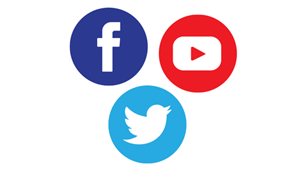
Disaster Apps, Tools, and TechnologyAccording to the Pew Research Center, about 95 percent of Americans own a cell phone. This widespread access to technology provides an opportunity for disaster planners to utilize new ways to reach and communicate with the communities they serve. Several organizations have developed disaster-related mobile apps to aid in preparing for disasters, assist with communication during a disaster, and provide field tools for disaster responders. In addition, social media has been shown to play an important role for communicating with the public and disseminating information in real time. This issue of The Dialogue from SAMHSA’s Disaster Technical Assistance Center (DTAC) highlights the ways disaster planners can utilize mobile apps and social media before, during, and after a disaster. It also provides information on tools to assist the public in recovering from a disaster. Do you have a favorite app or tool that you use during disasters? Would you recommend a specific technology to others in the field? Please share your recommendations via email to dtac@samhsa.hhs.gov. Selected reader comments will be printed in a future edition of The Dialogue. | |||||||||||||||
Recommended ResourcesThis tip sheet from the Federal Emergency Management Agency (FEMA) shares a handful of different devices that individuals with disabilities and other access and functional needs can use after a disaster to communicate and gather information. The American Red Cross has a collection of mobile apps designed to share information and help with disaster preparedness. These disaster apps distribute tornado, hurricane, and flooding warnings; notify you when an earthquake occurs; and help monitor other weather and emergency alerts. Additionally, there are applications for first aid care for yourself and your pets. Posttraumatic Stress Disorder (PTSD) Coach Online is a tool developed by the National Center for PTSD to help anyone struggling with anxiety, anger, sadness, or other emotions after a disaster or trauma. Individuals can select a symptom they would like to work on, and PTSD Coach Online provides a variety of tools and resources to help cope. In collaboration with the National Center for PTSD, the National Child Traumatic Stress Network provides the Psychological First Aid (PFA) Mobile app, a tool for first responders who provide PFA to individuals before, during, or after a disaster. About The DialogueThe Dialogue, a quarterly technical assistance journal, is an arena for professionals in the disaster behavioral health field to share information, resources, trends, solutions to problems, and accomplishments. Read previous issues of The Dialogue. The views, opinions, and content expressed in this publication do not necessarily reflect the views, opinions, or policies of the Center for Mental Health Services (CMHS), the Substance Abuse and Mental Health Services Administration (SAMHSA), or the U.S. Department of Health and Human Services (HHS). |


























.png)









No hay comentarios:
Publicar un comentario